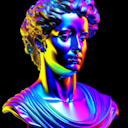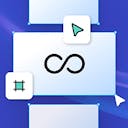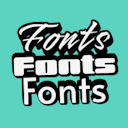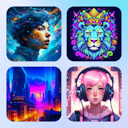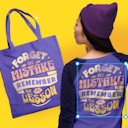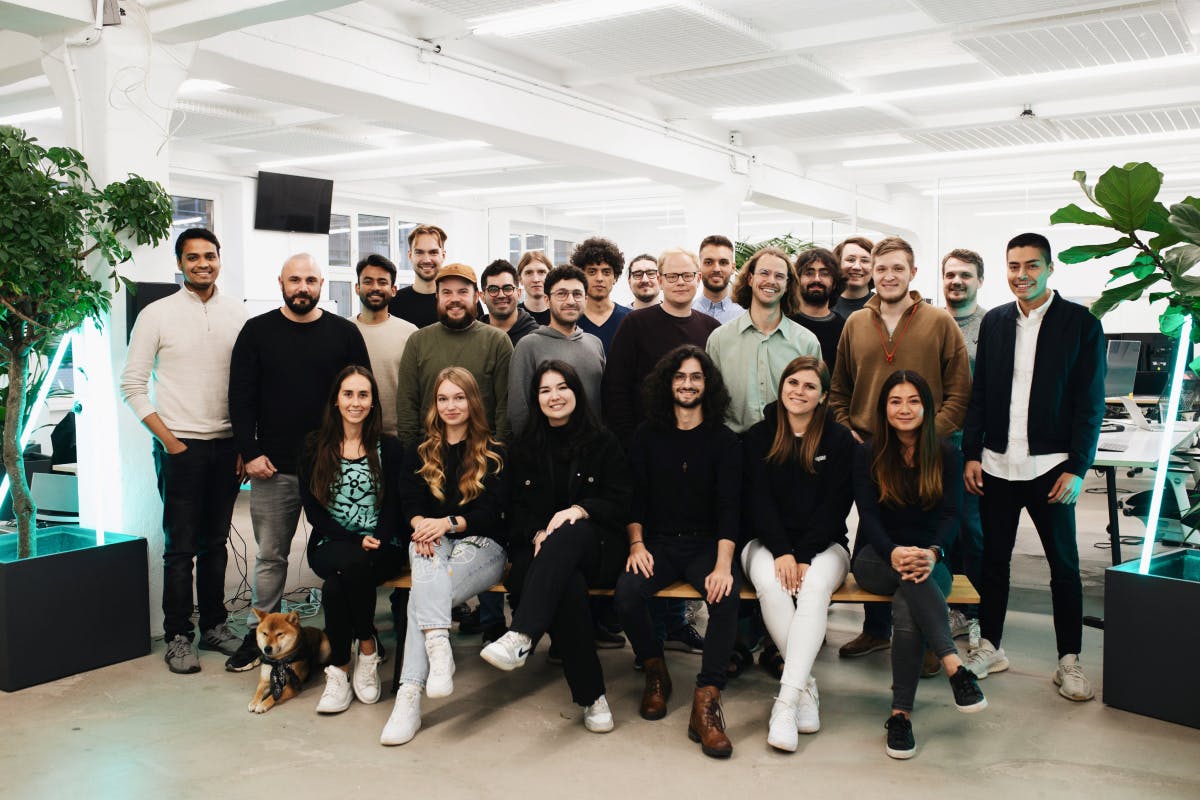Product
Templates
Resources
Company
Home
Blog
Tutorials
Tired of tool-hopping? Here’s what you should really look for in a graphic design app
Tired of tool-hopping? Here’s what you should really look for in a graphic design app
You know the drill. You open one tool to handle the vector work. Then you switch over to another app to clean things up. Next stop? A separate platform for mockups, because apparently, nothing can just happen in one place. Then you hop into yet another tool to share it with your team, because sending files around just isn’t efficient.
Cue the endless search for something that doesn’t look like it came from a forgotten template library. And don’t even get me started on double-checking that the font you bought two years ago still works without throwing errors.
All of this. For one project.
That’s not a workflow — that’s a hostage situation. And honestly? If a “graphic design app” can’t handle everything in one smooth, effortless workspace, then what are we even doing here?
So here’s a little gut-check: what should a graphic design app actually do for you? A checklist for tools that respect your skills, your time, and the way you like to work.
Let’s lay it out.
Or simply explore the best offers of our most intuitive graphic design app here.
A unified design ecosystem, not disconnected tools
You sit down to design, and before you've even made your first sketch, you've got four tabs open: one for templates, one for vector tweaks, another for mockups, and yet another just to send drafts to someone who still responds with annotated screenshots. It's exhausting.
But here's the real problem: it's not just annoying, it fragments your focus. Every time you jump tools, you're resetting your brain. New shortcuts, new UI quirks, new mental load. It's like trying to write a sentence in four different languages.
A truly professional graphic design app keeps everything in one space, not just for convenience, but to protect your creative headspace. It lets you move from AI image generator to logo creator to mockup without ever feeling like you're switching gears.
The result? You stay in rhythm longer, explore more variations, and present more cohesive ideas because you're never fighting your own tools.
Your graphic design app should be the hub of your creative process, connecting seamlessly with your broader workflow. This means content libraries that eliminate the need for separate subscriptions to stock sites, font services, and texture packs.
A tool that lets you play braver
We all know that moment when you hesitate before trying something new. Sometimes you hold back, not because you don’t want to try it, but because you’re worried the tool won’t let you change your mind later.
A great design app should take that fear off the table. It should make trying something unique feel effortless. It should let you explore, undo, redo, and tweak without losing momentum.
You should feel safe to play; knowing the tool will let you rein it in if needed, but never punish you for going too far.
Because that’s where the good stuff happens. The best designs aren’t careful, they’re curious. And if the tool doesn’t make room for that curiosity, it’s quietly limiting your best work.
This freedom to explore is built into Kittl's DNA by designers who understand that the creative process isn't linear—it's about exploration, iteration, and sometimes happy accidents.
The right tools, not all the tools
A design app shouldn’t overwhelm you with a sea of features you’ll never use. It should give you exactly what you need to move from idea to finished piece effortlessly. These are the tools that matter most:
A canvas that inspires exploration
Your workspace should accommodate your thought process, not the other way around. Look for a graphic design app that offers an infinite canvas where ideas, iterations, and final designs can coexist.
The best tools include multiple artboards within a single project to manage related designs without file-switching. And they make navigation easy between detailed work and big-picture views so you never lose context.
When you can zoom out to see all your designs at once, you gain perspective that's impossible in single-artboard tools. You can arrange mood boards alongside works-in-progress, compare different approaches side by side, and maintain a cohesive vision across all project elements.
Use Kittl’s infinite canvas to create project dashboards that include both in-progress designs and final deliverables. You can quickly show clients the evolution of a project without switching between files, arrange related designs in logical groupings, and maintain visual consistency across entire campaigns with ease.
Mockups that feel human
We’ve all been there. You finish a design you’re proud of, then drop it into a stiff, flat mockup… and suddenly it looks like a sad printout taped to a wall. No texture, no folds, no life—completely disconnected from reality.
Good mockups should feel like you’ve fast-forwarded to the final product in someone’s hands. The design should wrap naturally around curves and creases, reacting the way fabric or packaging actually does.
And you need variety. Some projects call for clean, studio-polished setups; others need those cozy, real-world scenes — a tote bag on someone’s lap, a laptop on a café table, bottle on a kitchen counter.
Mockups should help you tell the story your design is trying to tell — and you should be able to drop your work into them without leaving your canvas or battling a dozen layer masks.
Pro tip: Kittl can place your designs onto realistic mockups with auto-wrapping around folds and curves, all in real time, right in your project. The smart mapping adapts your work to fit naturally even on the most complex surfaces.
A content library that’s curated, not cluttered.

Having assets is one thing. Having assets you actually want to use is another.
Nothing breaks creative momentum faster than having to stop mid-flow to hunt down the right photo, texture, or vector, only to download, unzip, re-upload, and then spend precious time forcing it to fit your style.
Too often, design tools throw in giant libraries filled with inconsistent styles, low-res images, or generic illustrations that take more time to clean up than to design from scratch.
A truly smart design platform doesn’t just offer assets — it curates them. The vectors, illustrations, and textures you pull in should feel cohesive, high-quality, and adaptable, ready to slot into your design without rework or hesitation.
Good assets should speed you up, not slow you down, giving your ideas the support they need without becoming yet another problem to solve.
Kittl's content library features over 10,000 premium vector elements and illustrations created by in-house designers. Best of all, everything is fully customizable and comes with full commercial licensing, so you can use them confidently in client projects without worrying about usage rights.
Typography that listens to you.

You can tell a lot about a design tool by how it treats type. Some make it feel stiff and math-heavy: plug in numbers, hope for the best, and pray you don’t have to make edits later.
Typography should feel playful, responsive, and editable. You should be able to bend, distort, and reshape type, then go back and change the words if you need to.
Adjusting kerning or warping letters should feel like rearranging objects on a desk: intuitive and satisfying. If you can’t poke, stretch, and refine your text without fear, the tool is not on your side.
Kittl’s intuitive text transformation tools let you create dimensional effects, curves, and distortions while maintaining full editability, so you can refine both the words and their appearance at any point in your process.
Professional depth with intuitive access
Sure, you can learn complicated software. But do you want to? Pro designers aren’t looking for another tool to master. We want tools that feel intuitive, that reveal depth as you need it but don’t overwhelm you upfront.
Look for immediate access to common functions without hiding them in nested menus. The best tools include advanced features that reveal themselves when needed without cluttering the interface.
They offer customizable workspaces that adapt to different projects and design disciplines. And they provide features that grow with you as your skills develop, rather than limiting you as you advance.
The problem with most graphic design apps is they force a choice: simplicity or power. The easy-to-use tools lack professional depth, while the powerful ones bury essential functions under layers of complexity.
What professionals really need is a tool that reveals its capabilities progressively—simple enough to start using immediately, but with advanced features that become available as you need them.
Collaboration that feels like working side by side

Design projects rarely stay in one head. Modern design is collaborative, and your graphic design app should support teamwork without getting in the way.
Look for real-time editing where multiple team members can work simultaneously on the same project. The best tools offer role-based access that gives appropriate capabilities to designers, clients, and stakeholders. In-context commenting and feedback directly on designs eliminates the confusion of separate feedback channels.
The most frustrating part of collaboration isn't just the technical limitations—it's the communication breakdown. When feedback comes through screenshots with circles and arrows, lengthy emails that reference "the blue part," or meetings where people point at screens saying "move that thing," the design process becomes a translation exercise.
A truly collaborative graphic design app brings everyone into the same visual conversation. They make it feel like everyone’s in the same room, moving faster, thinking clearer, and getting better work done.
Want to learn more about Kittl Teams? Check out our article about it here
A graphic design app from designers, for designers
Great graphic design tools aren't created in a vacuum—they're built by people who deeply understand the creative process. The best platforms emerge from a genuine mission to solve real problems that designers face every day, not just to add more features to a checklist.
The ideal design app comes from a team that watches how designers actually work, identifies the friction points in their process, and obsessively focuses on removing those obstacles.
When a tool is built with this level of understanding and empathy, it doesn't just help you complete tasks—it becomes an extension of your creative thinking. It anticipates your needs, respects your process, and gives you more space to focus on what matters: bringing your vision to life.
A tool that evolves with you.
The best design tools don’t stay frozen in time. They evolve alongside your work. As trends shift and the types of projects you take on change, your tool should continue to feel relevant.
The best tools provide expanding libraries of contemporary assets and templates that stay relevant to current design trends. They introduce new features that anticipate shifting design approaches before you even realize you need them. And they include learning resources that help you master advanced techniques as you grow.
Because design doesn’t stand still — and neither should your software.
We’ve been putting up with too much.
All those little moments, jumping between apps, hunting down decent assets, wrestling with text that won’t bend the way you need it to. We tell ourselves it’s part of the process. But it shouldn’t be.
A great design app doesn’t just help you finish the job. It keeps up with you. It moves at the speed of your ideas, makes room for curiosity, and lets you stay focused on creating.
That’s what we’re building with Kittl. But honestly? This isn’t about pitching you. It’s about setting a standard. Because every designer deserves tools that feel like part of their brain, not another thing to manage.
Related articles

Design
The 12 Principles of Design
Have you ever wondered what makes a design truly great? What principles do designers use to create v...

Design
YouTube Banner Size Requirements and More for Desktop & Mobile
Are you experiencing blurry graphics in your YouTube banner? Or, is your YouTube profile image blurr...

Tutorials
Why your LinkedIn profile is forgettable (And how to fix it in minutes)
Your LinkedIn profile isn’t just a résumé—it’s your digital storefront, your portfolio, and your fir...

